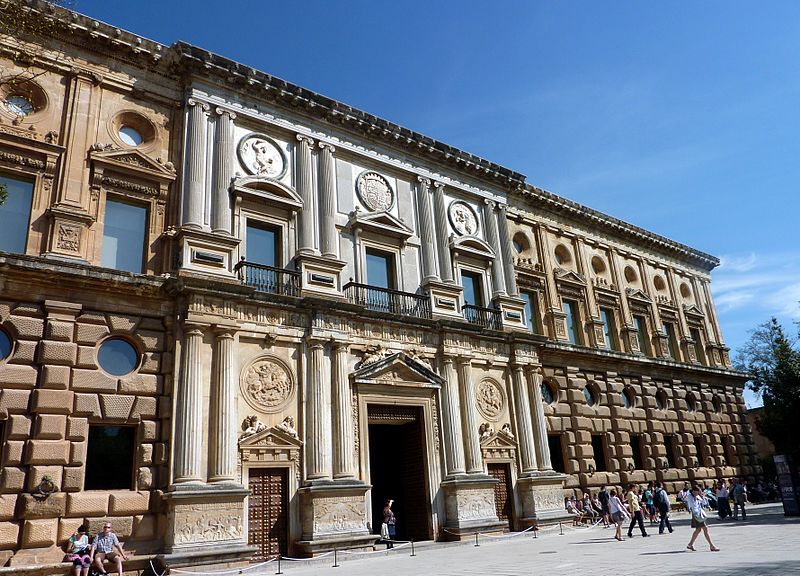Palacio de Carlos V
Emperor Charles V moved his court to the Alhambra in the summer months of 1526. From that time on he wanted to make Granada one his main residences.
For this reason he planned to build a new palace, connected to the Alcázar, continuing the work begun by his grandparents, Ferdinand and Isabella, the Catholic Kings.

The architect and painter Pedro Machuca from Toledo, pupil of Michelangelo, was commissioned to start the works in 1527. Emperor Charles V wanted to provide the Alhambra with all the amenities of the time. However, he never saw this wish completed. The palace, still unfinished, underwent several setbacks due to lack of funds or problems with the works. The ceilings fell in because of neglect. In 1923 the architect Leopoldo Torres Balbás began its restoration.
The palace is square-shaped, 63 metres wide and 17 metres high. It has a unique circular courtyard in its centre, one of the most beautiful creations of the Renaissance. Only the south and west façades are decorated in full. The northern and eastern sides are only partly decorated because they are attached to the Palacios Nazaríes. The western façade is Doric in style and decorated with reliefs of military victories, whilst the southern façade is Ionic in style whose reliefs depict mythological scenes.
Currently the Palacio de Carlos V houses the Museo de la Alhambra (focusing on Hispanic-Moorish culture) and the Museo de Bellas Artes (the Museum of Fine Arts).